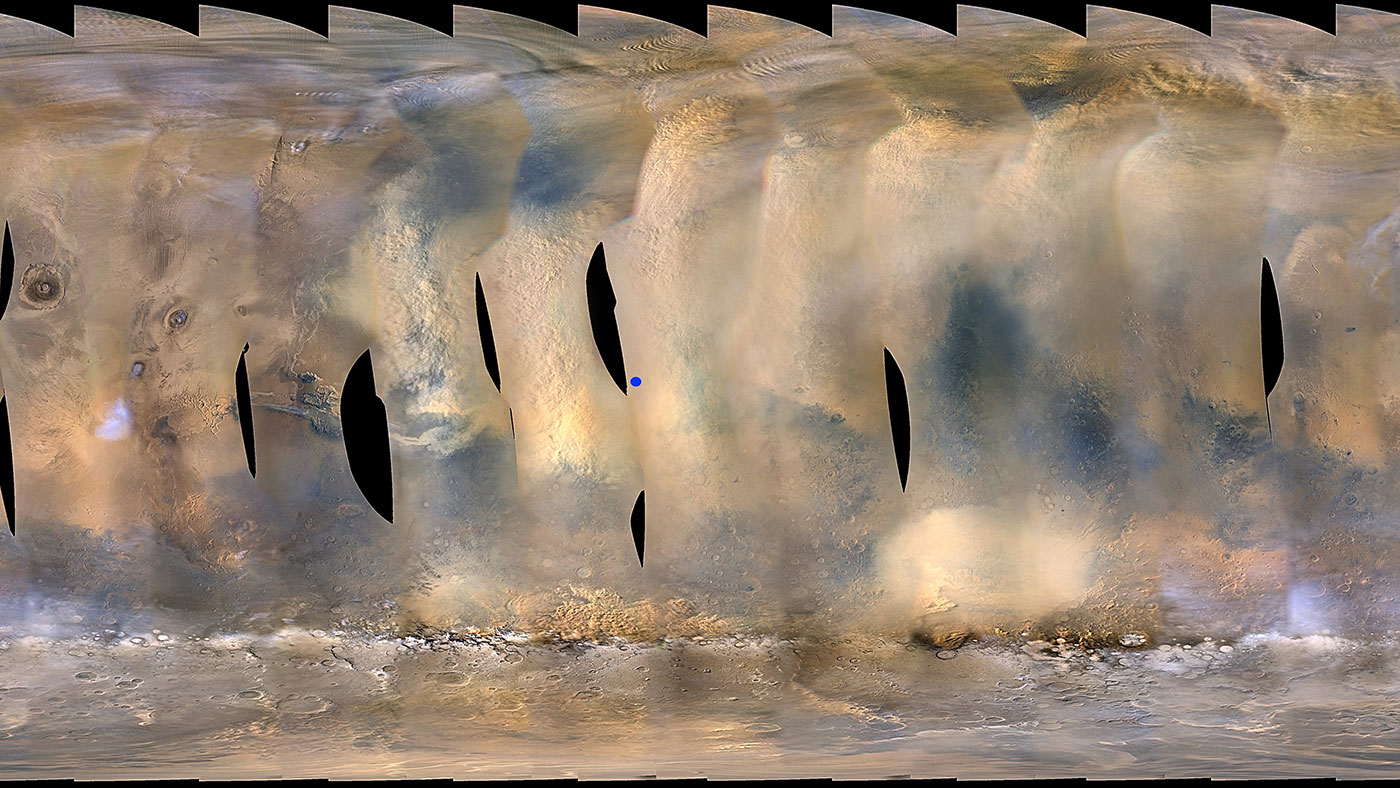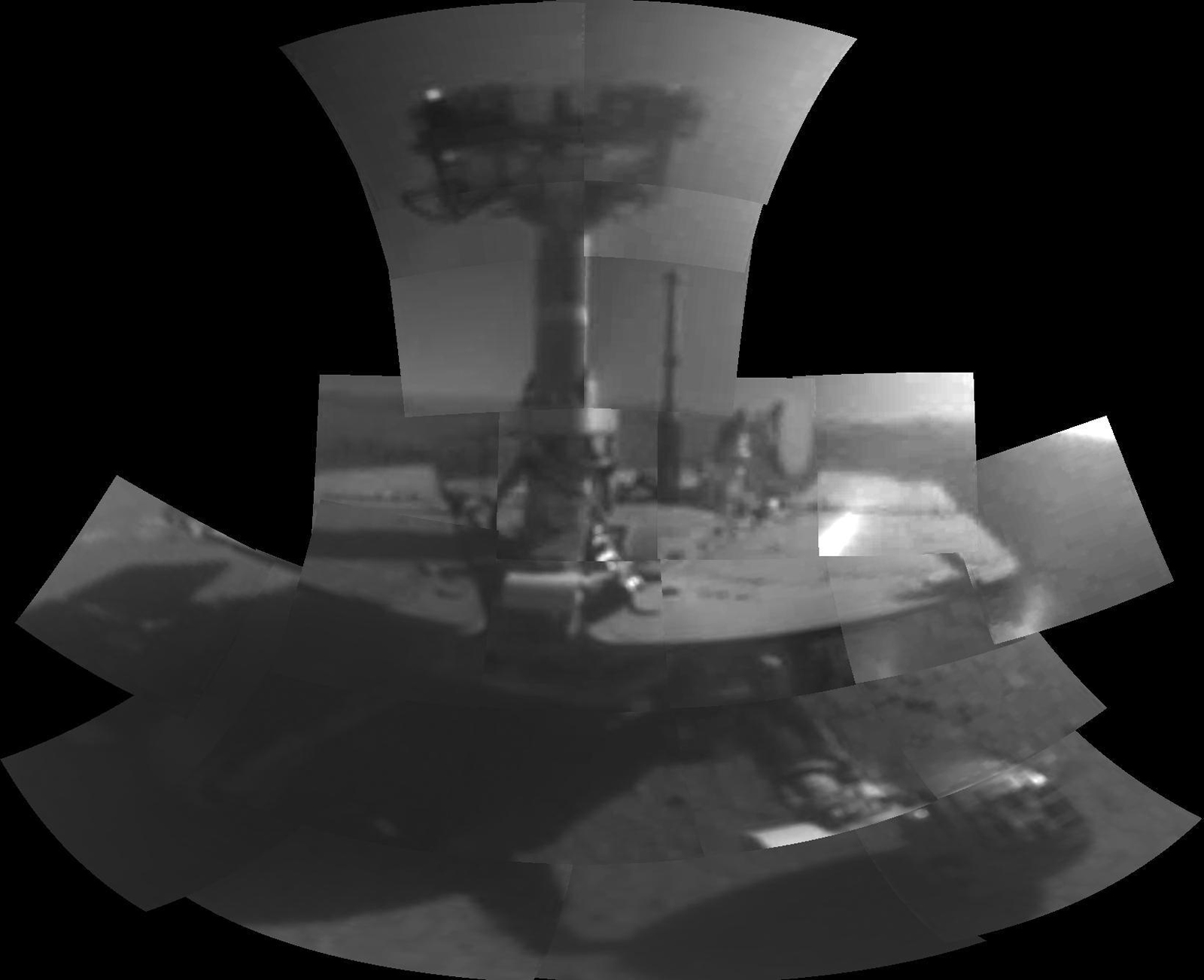Huge Dust Storm on Mars Hits NASA's Opportunity Rover

A massive dust storm on Mars has sidelined NASA's Opportunity rover, stalling the robot's science work as it waits out the still-growing tempest.
The Martian dust storm was first spotted from space by NASA's Mars Reconnaissance Orbiter, NASA officials said.
"As soon as the orbiter team saw how close the storm was to Opportunity, they notified the rover's team to begin preparing contingency plans," NASA officials said in a statement. "In a matter of days, the storm had ballooned." [The Greatest Mars Discoveries by Opportunity & Spirit]
As of Friday (June 8), the storm covers more than 7 million square miles of Mars (18 million square kilometers), according to NASA. That's an area larger than all of North America on Earth.
"Full dust storms like this one are not surprising, but are infrequent," NASA officials said in the statement. "They can crop up suddenly but last weeks, even months."
The area blanketed by the dust storm includes Perseverance Valley, Opportunity's current home on the vast Martian plains of Meridiani Planum.
Opportunity has been exploring Mars since 2004, but it runs on solar power. With the dust storm clogging up the sky, the amount of sunlight the rover can use to recharge has dropped. NASA compared the conditions to "an extremely smoggy day that blots out sunlight."
Get the Space.com Newsletter
Breaking space news, the latest updates on rocket launches, skywatching events and more!
By Wednesday (June 6), Opportunity's power levels saw a major drop, forcing the rover to stop all science to conserve power. If the storm lasts too long, the main concern will be the Martian cold, a danger Opportunity has faced in the past, NASA officials said.
"There is a risk to the rover if the storm persists for too long and Opportunity gets too cold while waiting for the skies to clear," NASA wrote in the statement. Cold is thought to be what killed NASA's Spirit rover, Opportunity's twin, in 2010 after that robot got stuck in the Martian sand.
But Opportunity is a survivor. And it's seen dust storms bigger than the one it's experiencing now.

In 2007, a dust storm on Mars covered the entire planet and forced Opportunity to hunker down for two weeks in a sort of survival-mode of minimal operations. To save power, the rover went days without phoning home to its controllers at NASA's Jet Propulsion Laboratory in Pasadena, California.
It was during that 2007 storm that Opportunity's handlers worried about the rover's ability to power its vital survival heaters with the low power levels caused by that dust storm. But Opportunity survived.
In fact, Opportunity has been surviving for 15 years.
The rover (and its twin Spirit) launched separately to Mars in 2003 and landed in January 2004 for what was originally scheduled to be a 90-day mission. But like the dust storm now battering Opportunity, the rover's mission ballooned from 3 months to 15 years, 14 of them on the Martian surface.
Email Tariq Malik at tmalik@space.com or follow him @tariqjmalik. Follow us @Spacedotcom, Facebook and Google+. Original article on Space.com.
Join our Space Forums to keep talking space on the latest missions, night sky and more! And if you have a news tip, correction or comment, let us know at: community@space.com.

Tariq is the Editor-in-Chief of Space.com and joined the team in 2001, first as an intern and staff writer, and later as an editor. He covers human spaceflight, exploration and space science, as well as skywatching and entertainment. He became Space.com's Managing Editor in 2009 and Editor-in-Chief in 2019. Before joining Space.com, Tariq was a staff reporter for The Los Angeles Times covering education and city beats in La Habra, Fullerton and Huntington Beach. In October 2022, Tariq received the Harry Kolcum Award for excellence in space reporting from the National Space Club Florida Committee. He is also an Eagle Scout (yes, he has the Space Exploration merit badge) and went to Space Camp four times as a kid and a fifth time as an adult. He has journalism degrees from the University of Southern California and New York University. You can find Tariq at Space.com and as the co-host to the This Week In Space podcast with space historian Rod Pyle on the TWiT network. To see his latest project, you can follow Tariq on Twitter @tariqjmalik.









